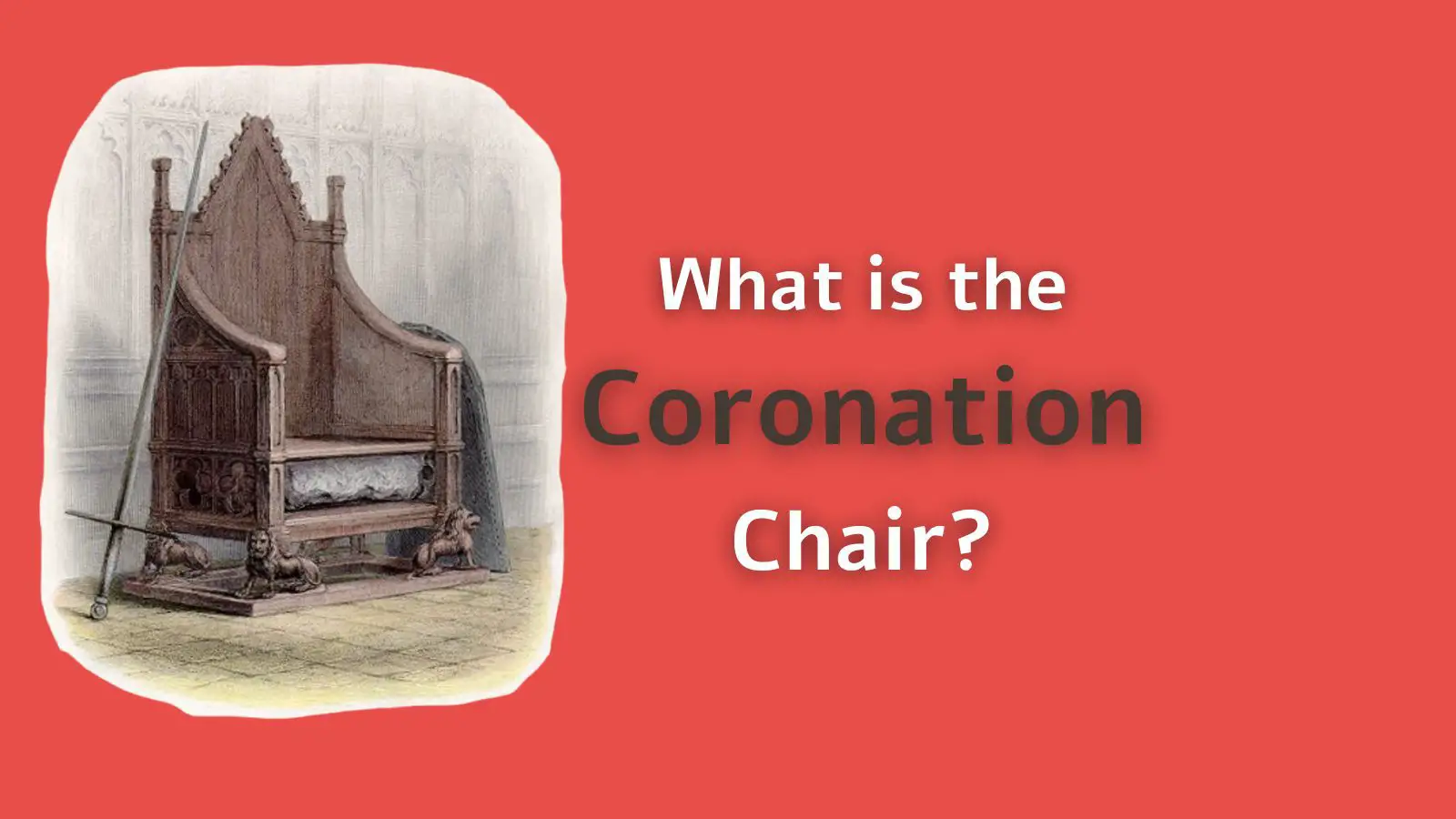What is the Coronation Chair?
For the last seven centuries, The Coronation Chair housed in Westminster Abbey has played a seminal role in the coronation, anointing, and crowning of British monarchs. This very precious and famous piece of furniture has taken its place in front of the High Altar in the Abbey for these special occasions since 1308. King Henry IV was crowned in the Chair in 1399.
When King Edward I moved the famous Stone of Scone from Scone in Scotland back in 1296, he had The Coronation Chair made to enclose the Stone. It was moved to the Abbey and put under the care of the Abbot of Westminster. Between 1300 and 1301, the King commissioned an oak chair to contain the Stone. The Chair was painted by Master Walter and decorated with images of birds, foliage, and animals. Either Edward the Confessor or Edward I is depicted on the back of the Chair, shown with his feet resting on a lion. In 1727, four gilt lions below were included, too. At first, the Stone was enclosed under the seat, but the wooden decoration on the front had over the years been torn away.
The Coronation Chair stands at a height of 2.05 meters (6 feet 9 inches) and has seen thirty-eight coronation ceremonies for reigning monarchs held at the Abbey. Of the monarchs, two were never crowned and they were Edward V, who was one of the two “Princes in the Tower”, and Edward VIII, who abdicated. Separate coronation ceremonies were also held for fourteen queen consorts.
William III and Mary II were crowned together in one ceremony in 1689 for which a special chair was commissioned for Mary while the ancient chair was secured for William. The public can view Mary’s chair in the new Queen’s Diamond Jubilee Galleries at the Abbey.
The Coronation Chair has been removed from Westminster Abbey only twice in almost 800 years. Once when Oliver Cromwell was inducted as Lord Protector of the Commonwealth of England in Westminster Hall and again for its own protection during the German Blitzkrieg of the Second World War. It was for this reason, on 24 August 1939, that the Stone of Scone was moved out of the way for the chair to be transported by truck out of London to Gloucester Cathedral. Upon its arrival under the care of detectives, the Dean and the Cathedral Architect signed for its receipt.
The Chair has seen some damage, both innocent and malicious over the many centuries. Mostly though, 18th and 19th-century visitors and Westminster schoolboys immortalised themselves by carving their names into the back part of the Chair. “P. Abbott slept in this chair 5-6 July 1800” is carved into the seat. The Suffragettes are blamed for the bomb attack in 1914 that took off one small corner of the Chair.
When the Chapel of St Edward the Confessor was closed to the public in 1997, The Chair lost its home of many centuries and was moved in February 1998 from the ambulatory. It was raised on a modern pedestal near the tomb of Henry V.
The Chair underwent conservation and cleaning within an enclosure for that purpose at the west end of the Nave of St George’s Chapel in April 2010. It was then, under the supervision of the Hamilton Kerr Institute, that the rare pigment orpiment was found in the compartment enclosing the Stone. The front of the chair was uplifted with wooden tracery since the original has been absent going back to the 1900s. This was also when it came to light that the Coronation Chair lacked a wooden seat-board until the 16th or 17th century. And that the Stone was actually the seat for centuries before then. 2013 saw the Chair receive a new plinth and canopy display in St George’s Chapel, designed by the Abbey’s Surveyor Ptolemy Dean.
The Coronation Chair was last used during the coronation of the late Queen, Elizabeth II, on 2 June 1953, over a year after the death of her father in February 1952. Since then, The Stone of Scone has been removed from its place beneath the Chair and returned to Edinburgh Castle in 1996. The Chair will be used for King Charles III’s coronation in due course. Plans are in place for the Stone to be reunited with the Chair at Westminster Abbey for the first time in 26 years, for this purpose.


